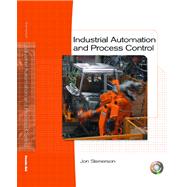
Note: Supplemental materials are not guaranteed with Rental or Used book purchases.
Purchase Benefits
What is included with this book?
(NOTE: Each chapter concludes with Questions.)
1. Overview of Industrial Automation.
2. Safety.
3. Overview of Programmable Logic Controllers.
4. Fundamentals of Programming.
5. Rockwell Automation Addressing and Instructions.
6. Timers and Counters.
7. Input/Output Modules and Wiring.
8. Math and Advanced Instructions.
9. Industrial Sensors.
10. Introduction to Robotics.
11. Introduction to Fluid Power Actuation.
12. Fundamentals of Process Control.
13. Control Systems.
14. Overview of Plant Floor Communication.
15. CNC Machines.
16. Installation and Troubleshooting.
The New copy of this book will include any supplemental materials advertised. Please check the title of the book to determine if it should include any access cards, study guides, lab manuals, CDs, etc.
The Used, Rental and eBook copies of this book are not guaranteed to include any supplemental materials. Typically, only the book itself is included. This is true even if the title states it includes any access cards, study guides, lab manuals, CDs, etc.